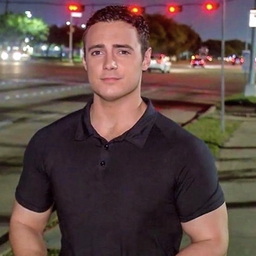
Andy Corbley
Senior Editor at Good News Network
Founder and Editor at World at Large
Articles
-
4 days ago |
tspantx.com | Andy Corbley
GNN loves seeing celebrities channel their influence for good, and there are few better at it than America’s undisputed sweetheart of sweethearts. Taylor Swift, having recently concluded the record-breaking Eras tour, visited Joe DiMaggio Children’s Hospital in Florida.
-
4 days ago |
goodnewsnetwork.org | Andy Corbley
GNN loves seeing celebrities channel their influence for good, and there are few better at it than America's undisputed sweetheart of sweethearts. Taylor Swift, having recently concluded the record-breaking Eras tour, visited Joe DiMaggio Children's Hospital in Florida. Passing between rooms in a lithe sage-green dress, she touched the hearts of the children undergoing treatment for life-threatening illnesses including cancer and cardiomyopathy.
-
4 days ago |
tspantx.com | Andy Corbley
Imagine the outrage if construction of a highway interchange was approved directly overhead of the Brooklyn Bridge—that’s what one Tokyo neighborhood has had to deal with for more than 60 years. The most historic bridge in the city has long been bathed in the shadow and tumult of a concrete overpass, but things are looking […]The post Historic Tokyo Bridge Liberated from Concrete Overpass Will Shine Again Thanks to Grassroots Campaign appeared first on Good News Network. Average rating 0 / 5.
-
4 days ago |
goodnewsnetwork.org | Andy Corbley
Imagine the outrage if construction of a highway interchange was approved directly overhead of the Brooklyn Bridge-that's what one Tokyo neighborhood has had to deal with for more than 60 years. The most historic bridge in the city has long been bathed in the shadow and tumult of a concrete overpass, but things are looking up for the Nihonbashi Bridge-literally. A coalition of the metropolitan governments is preparing to remove the overpass as part of an urban rejuvenation project.
-
4 days ago |
tspantx.com | Andy Corbley
The destiny of a large collection of property and art belonging to the family of the last German emperor has finally been decided after 100 years of uncertainty that persisted throughout some of the largest events in 20th-century Europe. The story centers around the Hohenzollerns, the royal family of Prussia that included Kaiser Wilhelm II […]The post 100-year Dispute Finally Settles Looting of Last German Emperor–by Building New Museum Collection appeared first on Good News Network.
Journalists covering the same region

Jay Cheshes
Writer at Freelance
Jay Cheshes primarily covers news in Miami, Florida, United States and surrounding areas.
Danielle Robles
Writer and Creative Director at Freelance
Danielle Robles primarily covers news in New York City, New York, United States and surrounding areas including Brooklyn and Queens.

Peter Ellegard
Travel and Golf Writer at Freelance
Peter Ellegard primarily covers news in Los Angeles, California, United States and surrounding areas.

Barney Breen-Portnoy
Editor-in-chief at Combat Antisemitism Movement
Barney Breen-Portnoy primarily covers news in various locations across the United States, including areas in Missouri, Texas, Oklahoma, Virginia, and California.

Steven Romo
Anchor and Correspondent at NBC News
Anchor and Correspondent at MSNBC
Steven Romo primarily covers news in New Orleans, Louisiana, United States and surrounding areas.
Try JournoFinder For Free
Search and contact over 1M+ journalist profiles, browse 100M+ articles, and unlock powerful PR tools.
Start Your 7-Day Free Trial →